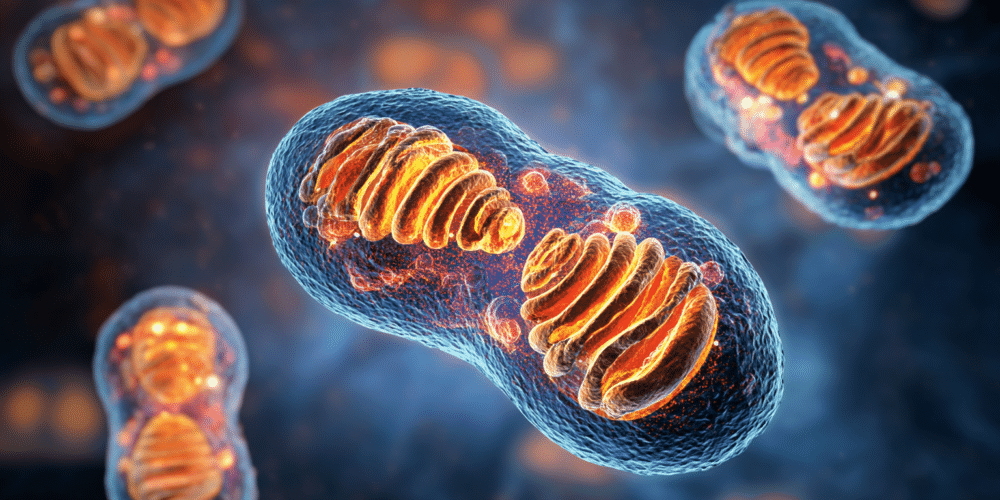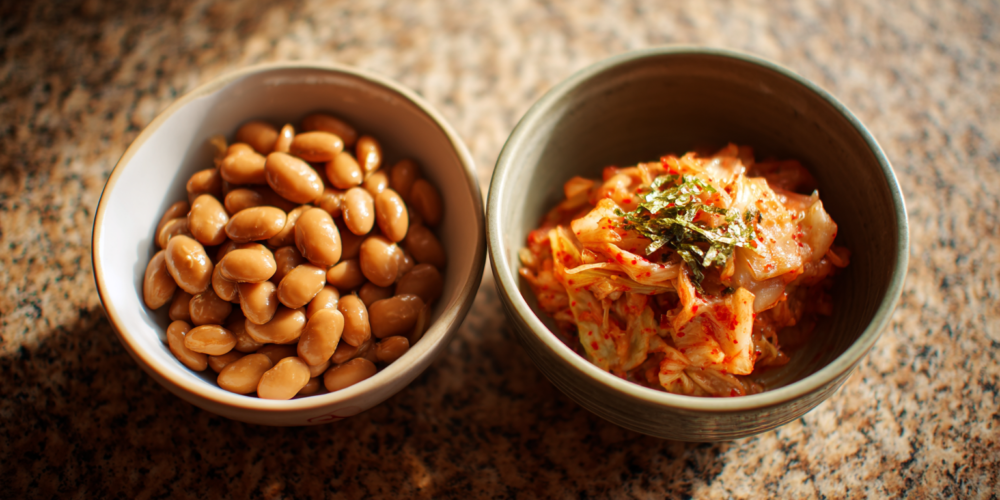3. Your Cellular ‘Power Plants’ Are Shutting Down: Vitamin B3 (Niacin) Deficiency

Do you feel exhausted from the moment you wake up, no matter how much you sleep? This profound fatigue could be linked to a deficiency in Vitamin B3, also known as niacin. Your energy doesn’t just come from sleep; it’s generated inside every cell in your body by tiny power plants called mitochondria. Niacin is an essential component for converting the food you eat into usable energy (ATP). Without enough B3, your mitochondria work at half-speed, and you feel it as deep fatigue, especially in your legs, which have to fight gravity all day.
But niacin has a second superpower crucial for circulation: it’s a natural vasodilator. It helps relax and widen your blood vessels. When you eat foods rich in B3, like mushrooms or peanuts, your arteries open up a bit more, allowing blood to flow with less resistance. This is like expanding a two-lane road into a four-lane highway. This dilation reduces pressure inside the vessels, meaning your heart doesn’t have to pump as hard, and blood can more easily reach every corner of your body, including your ankles and calves. Excellent sources include mushrooms (shiitake and portobello are great), legumes like lentils, and nutritional yeast, a hidden gem. Just two tablespoons of nutritional yeast can provide all the B3 you need for a day. One important note: coffee can interfere with B3 absorption, so try to wait at least an hour between your coffee and your niacin-rich meal.
2. You’re Destroying Nutrients in Your Own Kitchen: Improper Food Preparation

You can buy the healthiest, most nutrient-dense foods, but if you prepare them incorrectly, you could be throwing their benefits down the drain—literally. Imagine you buy fresh spinach, full of magnesium. You boil it for 10 minutes, then strain it, pouring the green water away. You’ve just discarded up to 80% of its minerals. This is a common form of nutritional sabotage.
Water is a primary thief of water-soluble nutrients like magnesium and B vitamins. Steaming vegetables until they are bright and crisp, rather than boiling them until they are dull and mushy, preserves these vital compounds. Another major error involves legumes and nuts. They contain natural compounds called phytates, which bind to minerals like magnesium, zinc, and iron, preventing your body from absorbing them. The ancient solution is simple: soaking. When you soak beans, nuts, or seeds overnight, you activate enzymes that neutralize these phytates, unlocking the minerals for your body to use. Heat is another critical factor. High temperatures destroy delicate B vitamins. Finally, even healthy foods need proper handling. Crushing or chopping garlic and letting it rest for 10 minutes before cooking allows the protective compound allicin to form. And that heart-healthy extra virgin olive oil? It loses its anti-inflammatory benefits when heated too high. Use it for dressings or add it at the end of cooking instead. These small changes ensure that the healthy food you buy actually becomes medicine for your veins.
1. Your Calcium ‘GPS’ is Broken: Vitamin K2 Deficiency

There is a little-known vitamin that acts as the traffic director for calcium in your body. Without it, this essential mineral can end up hardening your arteries instead of strengthening your bones. This is Vitamin K2. It’s important to distinguish it from Vitamin K1, which is found in leafy greens and helps with blood clotting. Vitamin K2 has a different job: it’s the GPS that tells calcium where to go.
Without enough K2, the calcium you consume from your diet or supplements doesn’t just go to your bones and teeth. It gets deposited in the soft tissues of your body, most dangerously in the walls of your blood vessels. This process is called arterial calcification. Your arteries, which should be flexible and elastic, slowly become rigid like PVC pipes. They can no longer expand to accommodate blood flow, pressure rises, and circulation suffers. Your legs, being furthest from the heart, are the first to feel the effects. The richest food source of K2 is natto, a Japanese dish of fermented soybeans, but its strong taste and sticky texture are not for everyone. For supplementation, the MK-7 form is most effective. Crucially, K2 works as part of a team with Vitamin D and magnesium. Vitamin D helps you absorb calcium, and K2 tells it where to go. Taking calcium and Vitamin D without ensuring you have enough K2 is like hiring a delivery driver without giving them an address.
The Ultimate Habit: Why Walking is Non-Negotiable

Beyond any single nutrient, there is one habit so powerful it can revolutionize your leg circulation: walking. Each step you take sets off a chain reaction. Your foot striking the ground squeezes blood out of the sole’s venous plexus. Then, the muscles in your entire leg—calves, thighs, and glutes—contract, massaging the veins and propelling blood upward. But the real magic happens in the endothelium. The increased blood flow creates a gentle friction against the artery walls, signaling them to produce nitric oxide, the body’s most potent natural vasodilator. It relaxes and widens your arteries, improving flow throughout your entire system. You don’t need to walk fast; a comfortable, continuous 30-minute walk is enough to generate measurable, lasting benefits.
Conclusion
You now understand the seven hidden saboteurs that may have been undermining your leg circulation for years. From the foundational need for Vitamin C and magnesium to the destructive power of sugar and the critical role of the calf pump, you are no longer in the dark. Poor circulation is not an inevitable consequence of aging; it is the result of specific, correctable factors. By making small, informed changes to your diet, your habits, and how you move, you can activate your body’s natural systems to restore healthy blood flow. You now have the knowledge to turn the tide, one step and one meal at a time, toward lighter, healthier, and happier legs.
Source: Dr. Iñigo Martín

